Xiaomi is back in the tablet space and how! It sets a benchmark with its Xiaomi Pad 5 which goes heavy with features on offer but is light on the pocket. Its closest competitor is the Apple iPad (9th gen) which undoubtedly offers a better tablet experience, especially with its support of apps and games but, with the Pad 5 you’re getting some of the most high-end features at half the price, even when you include the supported accessories.
Xiaomi Pad 5 is packed with functional features to the brim and carries a reasonable price tag. It marks Xiaomi’s return to the tablet space in India after 8 long years and aims to offer a premium tablet experience rivalling Apple iPads. Xiaomi has enough experience with the Indian smartphone market that has helped it remain at the top of the game and with the Pad 5, it aims to replicate that success in the tablet segment. Right from the Dolby Vision certified display, powerful Snapdragon 800-series chipset, quad speakers and a large battery to boot, the Xiaomi Pad 5 offers everything you need for a great tablet experience and tries to make its case against the Apple iPad 2021 (9th gen). But does it have enough potential to be considered as an alternative to the mighty iPad? We try to find out in this review of the Xiaomi Pad 5.
Also Read: iPad Air (2022) Review - Utilitarian Maximus
Xiaomi Pad 5 review: Build and DesignThe Xiaomi Pad 5 has a premium build and feels great to hold in the hand. The middle frame is made from aluminium while the rear panel is largely plastic with a glossy finish that’s resistant to fingerprints but not so much with smudges. The Pad 5 is thinner than the iPad (9th gen) at just 6.9mm but is slightly hefty at 511 grams. Still, you will be able to use it comfortably with both hands like when gaming or watching something casually on YouTube.
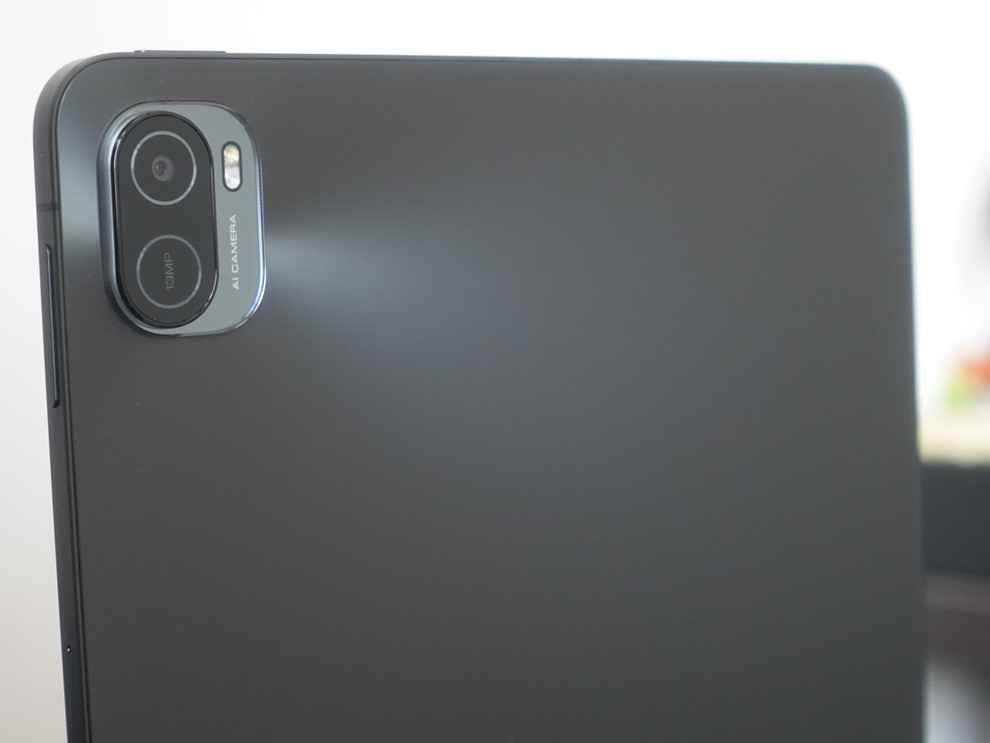
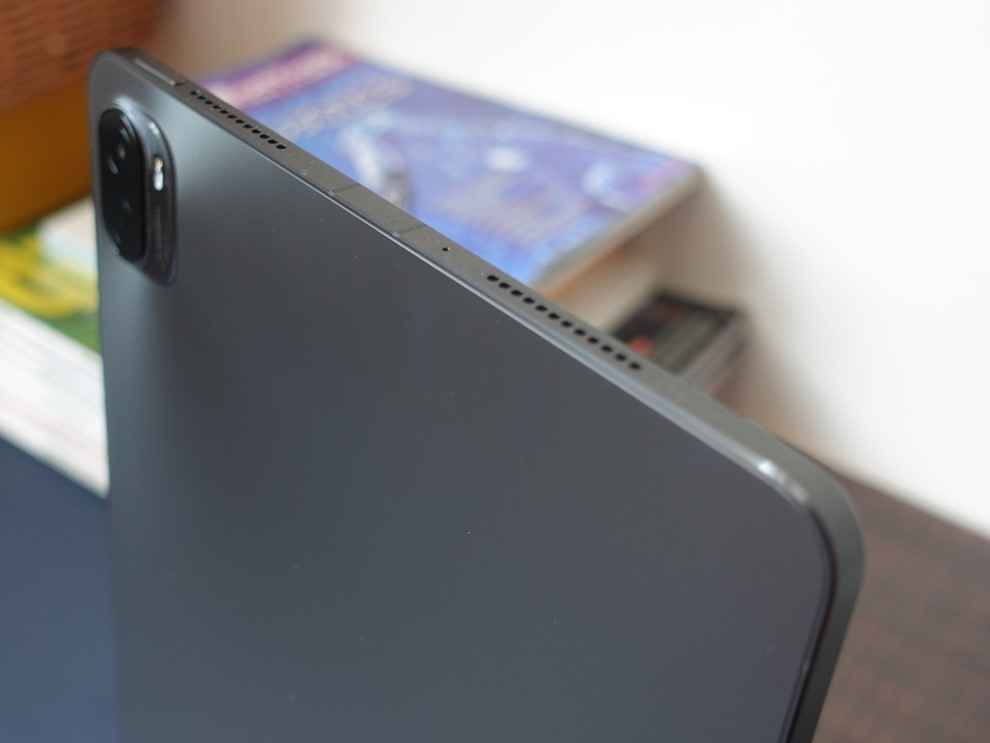
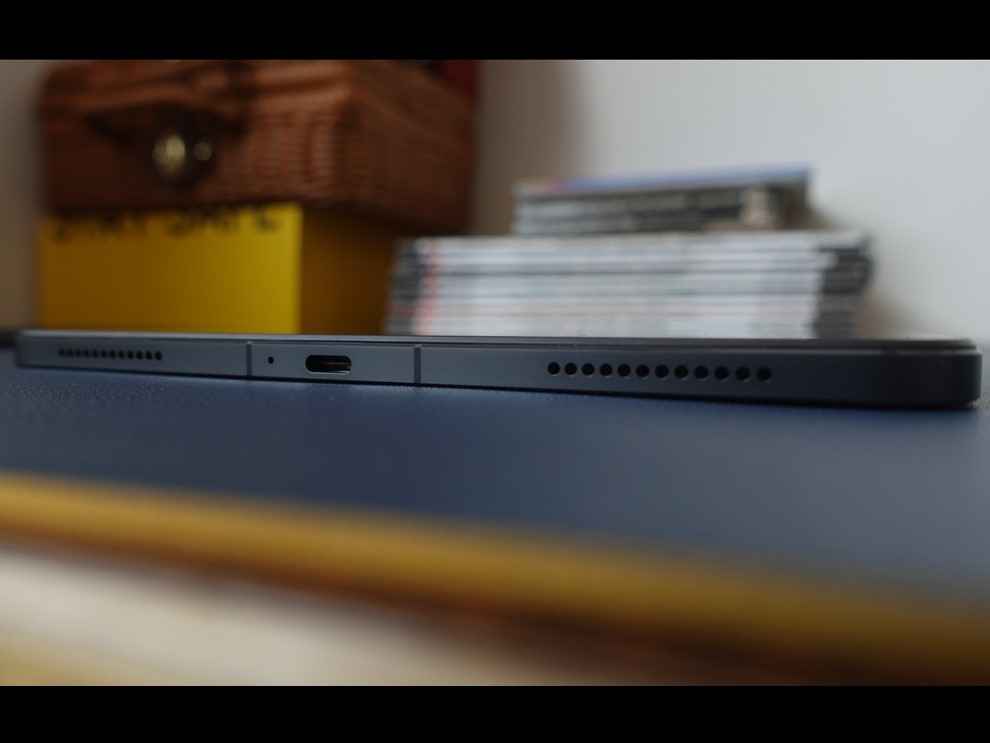
The Pad 5 has four speakers, two at the top and two at the bottom accompanied by a power button and a Type-C port respectively. The power button does not have an embedded fingerprint reader which I feel is a missed opportunity for Xiaomi and anyone who buys the Pad 5 will have to make do with either a pin or pattern to unlock the tablet. There is a magnetic connector to dock the Smart Pen and a three-pin pogo connector to attach the Keyboard. The Xiaomi Pad 5 is well-designed for daily use and feels every bit more premium than you would expect from a tablet at this price.
Xiaomi Pad 5 review: Display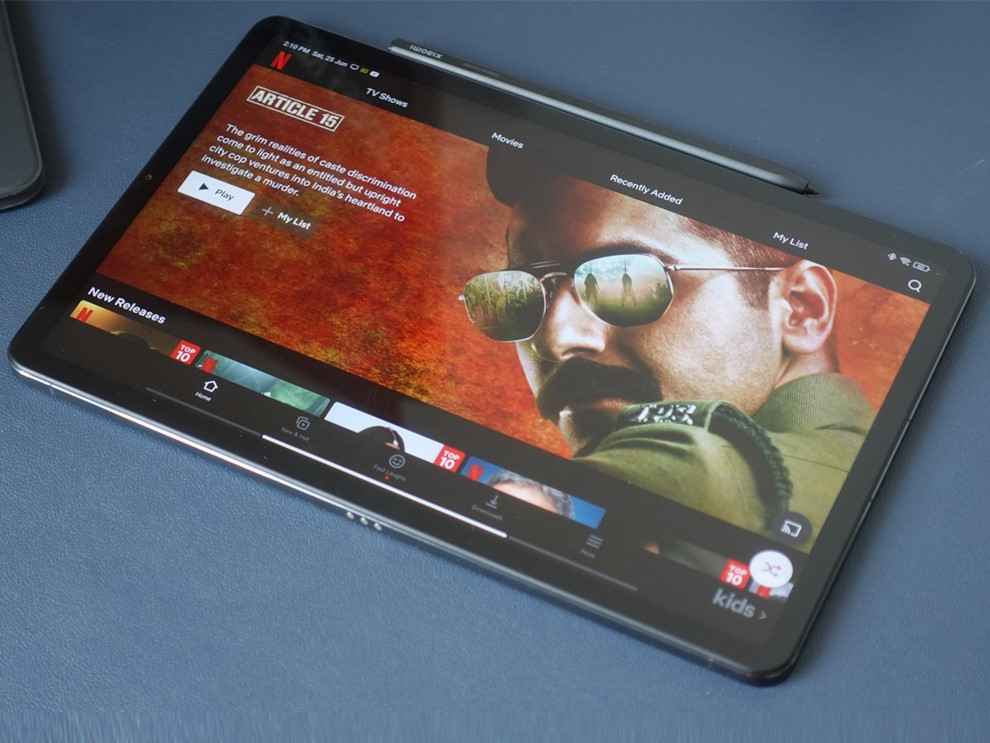
The Pad 5 has a gorgeous and high-resolution 10-bit display even though it uses an LCD panel, the visuals are sharp with good contrast and details that make for a great viewing experience. The screen is certified for Dolby Vision and HDR10 playback which makes watching movies or TV shows on Netflix or Prime Video even more vibrant and enjoyable with supported content. While using the Smart Pen, the display may feel a bit slippery and as a result, I noticed some ghost touches sometimes when scribbling in the Notes app. Though it has palm rejection which works well almost all the time, you can always apply a matte screen protector to get a paper-like feel which is much better if you will be using the Smart Pen regularly with this tablet.
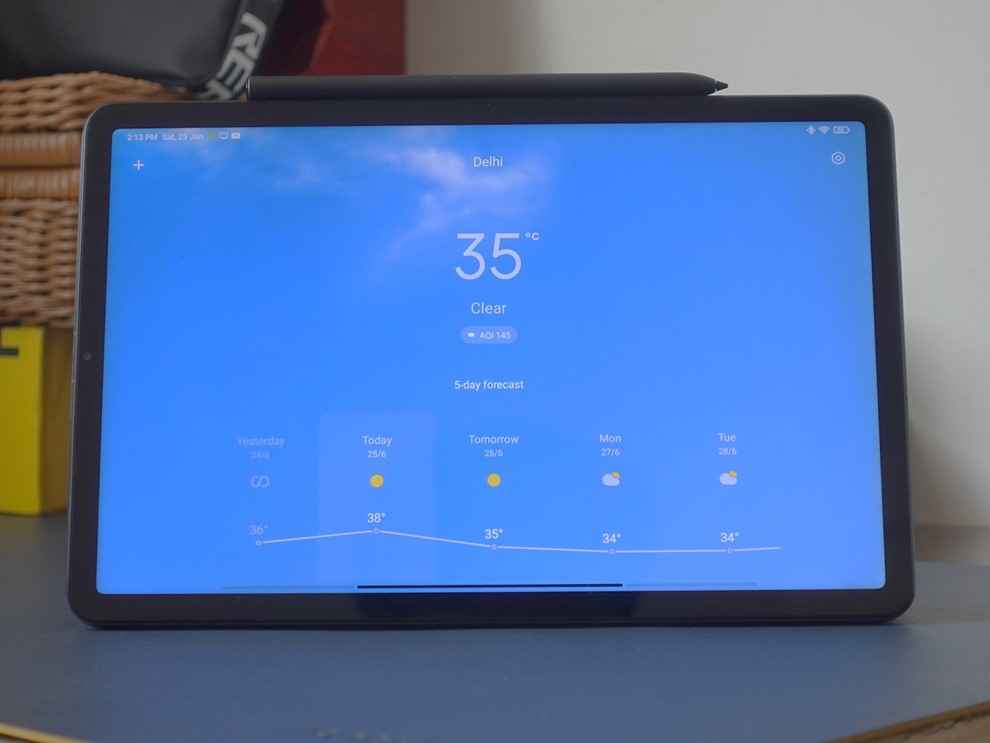
Xiaomi claims 650 nits brightness in High Brightness Mode which we found to be accurate in my daily use. In our tests, the display goes up to 635 nits on average in high brightness mode (Sunlight Mode) and around 630 nits in the normal mode. Since it's not an OLED panel, the display doesn’t have perfect black levels and goes to 6 nits which is decent. It also has a colour temperature sensor like the True Tone in iPad which adjusts colours based on the ambient lights. The screen also has Gorilla Glass 3 protection.
Xiaomi Pad 5 review: PerformanceThe general day-to-day performance of the Pad 5 is really great and there’s really nothing that breaks the experience. From MIUI for Pad to system animations and multitasking, the Pad 5 is excellent for playing games and doing some work on the side. It offers solid performance across the board and is capable of sustaining it for a long time giving you a sense of dependability which can’t be said for many tablets in this price range.
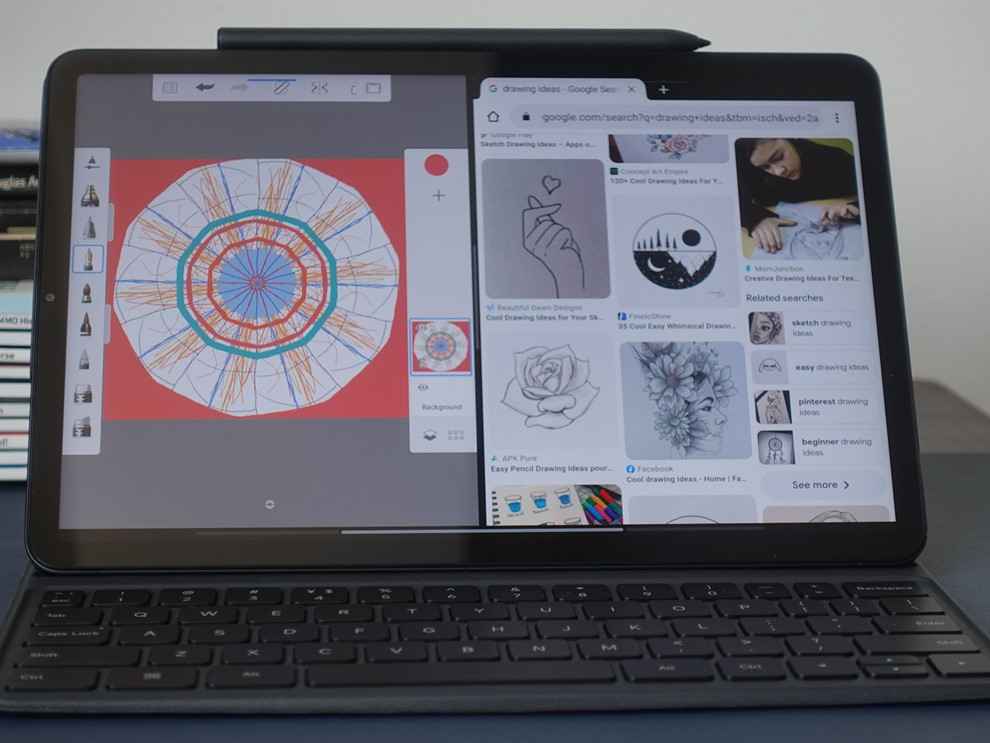
The Snapdragon 860 is capable of lending enough power for tasks like sketching, taking notes, editing photos and gaming or watching content on the go. In synthetic benchmarks like AnTuTu, Geekbench, 3DMark and more, the Pad 5 received decent scores that only prove that it is capable of running all apps and games you can find on the Play Store without any issues. In AnTuTu, the Pad 5 got 534436 points while in Geekbench 5 it received 731 points in single-core and 2499 points in multi-core tests. In the CPU throttling test, the Xiaomi Pad 5 was able to hold out on its own giving us 94% of its maximum performance. Being a tablet with a large surface area, heat dissipation isn’t a problem and this tablet rarely runs hot.
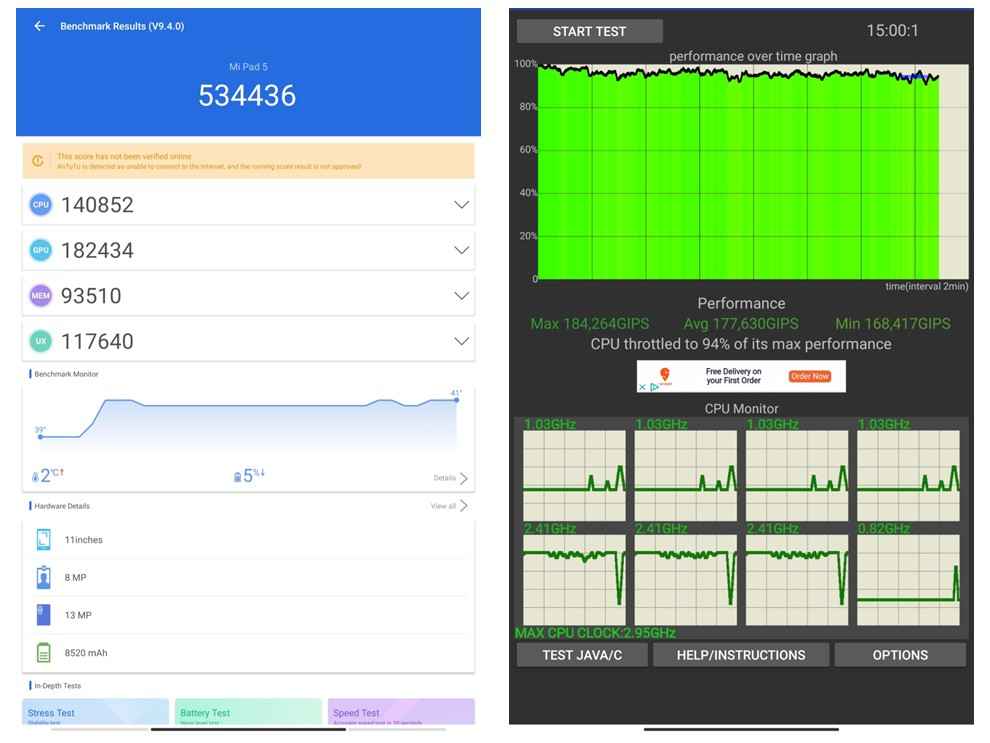
It runs intensive games like Genshin Impact, COD Mobile and BGMI without breaking a sweat though if you're coming from a smartphone, there’s a bit of a learning curve to play on such a large screen. The Xiaomi Pad 5 also has a great set of speakers that complement the visuals making for a great gaming and viewing experience. Though the presence of a 3.5mm audio jack is missed given that you will cover one speaker grille on each side when holding the tablet in landscape mode.
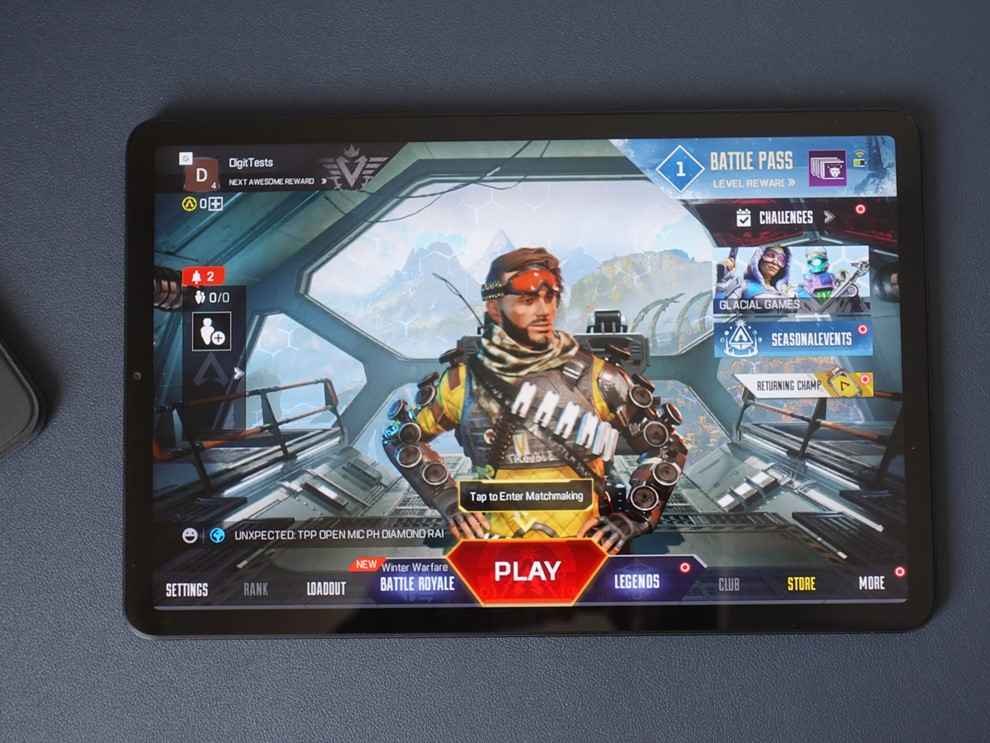
MIUI for Pad gives it a neat and minimal look which remains greatly responsive and smooth for the most part. The Android system still recognizes it as MIUI 13 based on Android 11 and there are still a lot many optimizations that are needed like the feed layout on Twitter or Instagram. However, my hope is that Xiaomi will continue to work on improving the MIUI for Pad especially since the Android 12 update is due which brings in much better support for large screens.
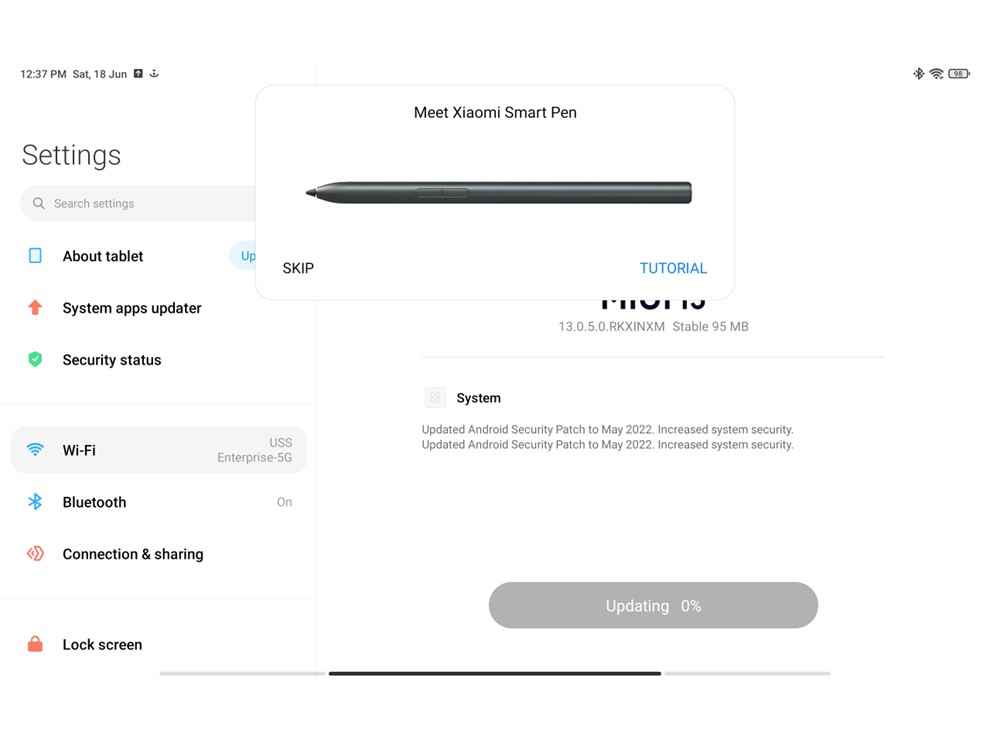
Xiaomi is offering a Smart Pen and a Keyboard dock as separate accessories with the Pad 5. The Smart Pen isn’t as polished as the Apple Pencil (2nd gen) but offers great pressure sensitivity levels with low latency, making it a great tool for taking notes in the Smart Note app or just sketching something in Sketchbook. It weighs just 12 grams and attaches to the top of Pad 5 when held in landscape. It charges wirelessly for the duration it is docked and takes just 20 minutes to fully charge.
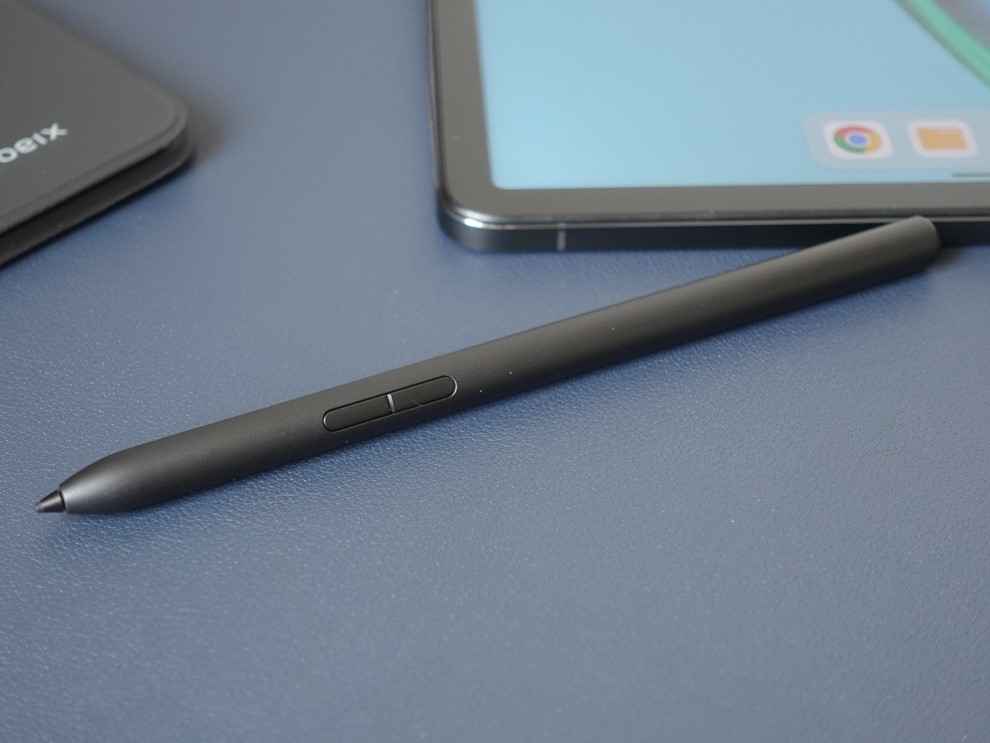
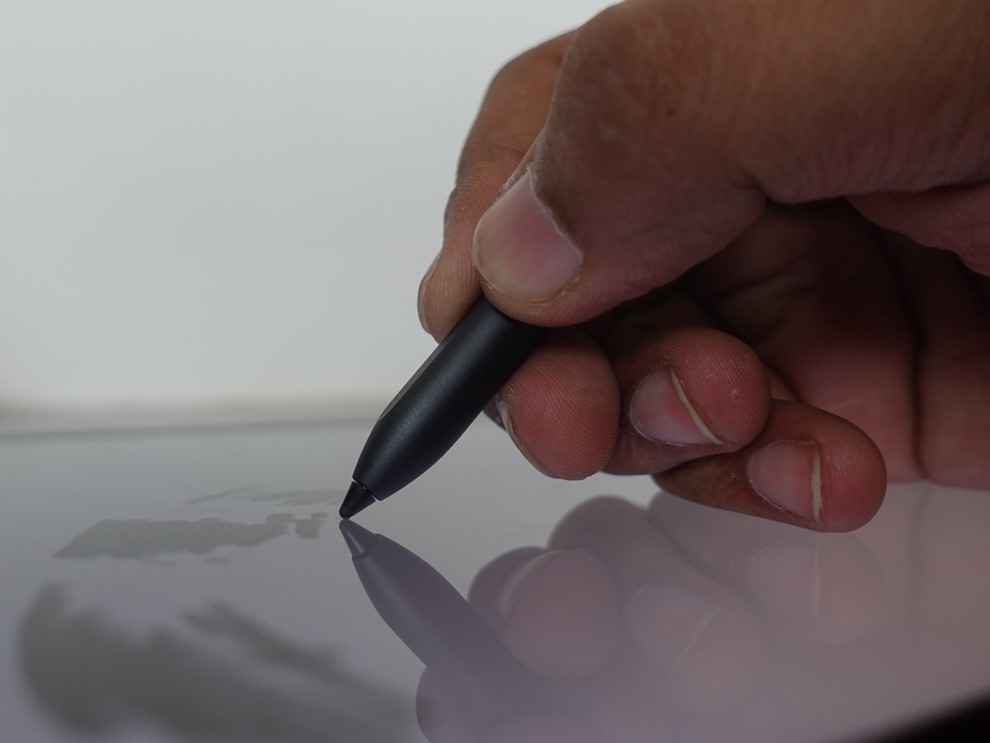
The other accessory is the Keyboard for the Xiaomi Pad which makes it a versatile tool but remains unavailable at the time of writing this review. You can further pair it up with a wireless mouse and you’re all set to get some work done. The keyboard is good enough for some writing work or just generally browsing around the web but don’t expect a laptop-like performance especially if your use case requires you to deal with a lot of spreadsheets. Otherwise, it’s a great utility for students who have just gotten into college and are looking for a portable and lightweight device for daily use.
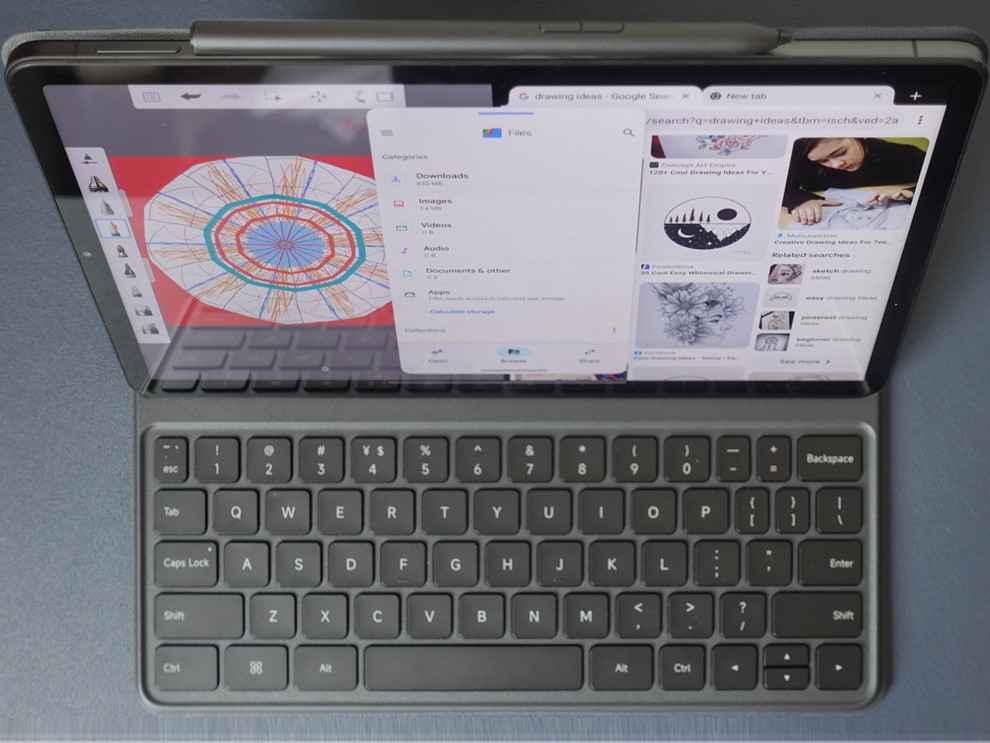
The Xiaomi Pad 5 has a pretty large battery which offers a long battery life. In my use, you could go on for a day or two of using the Pad 5 regularly. If you plan on watching occasional movies and TV shows, for the most part, expect around 3-4 days of battery life easily. In our video loop test, the Xiaomi Pad 5 ran a local 4K video file over VLC for around 14.5 hours before giving up on us. This was with the brightness set to maximum and refresh rate set to 120Hz which is pretty good.
Though the Pad 5 supports 33W fast charging, Xiaomi bundles a 22.5W adapter in the box. On average, it took around 1 hour and 55 minutes to fully charge the massive 8,720mAh battery. You can effectively reduce the charging time if you have a 33W Xiaomi charger handy otherwise it's not worth buying separately.
Xiaomi Pad 5 review: Cameras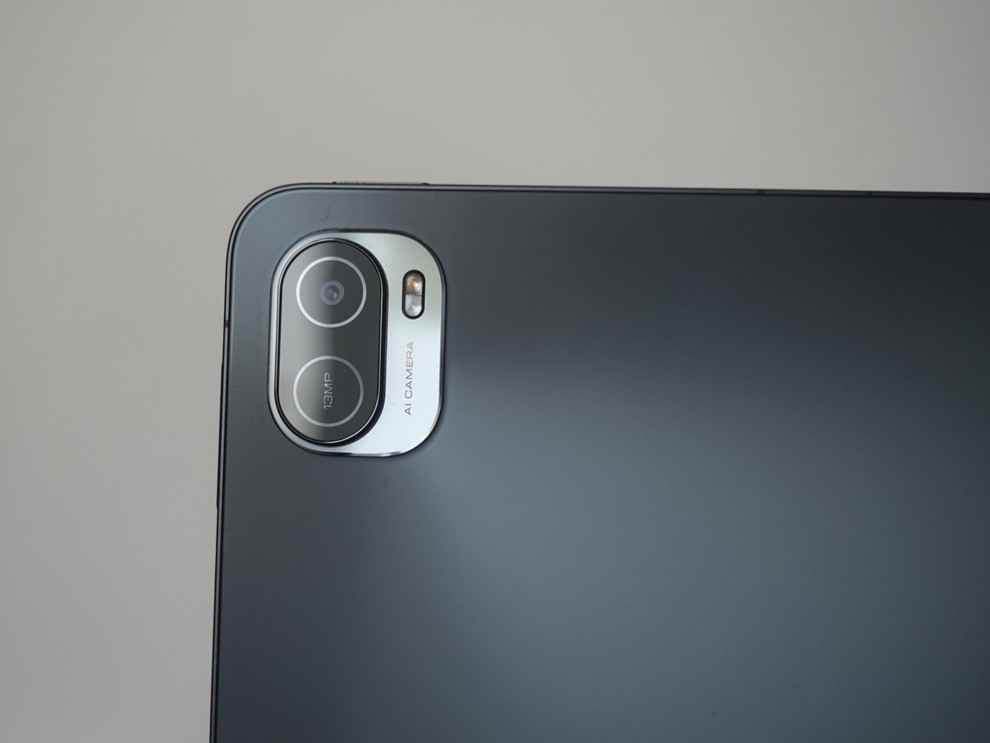
The Pad 5 has a 13MP rear camera which is decent and does a good job of scanning documents and sharing them when required. However, it’s not going to be a first choice for taking pictures for anyone who has a smartphone in their pocket. The front-facing camera is also good enough for video calls and it manages to put across sharp visuals with natural skin tones. However, its placement is the same as on the iPads which means you’ll never appear to be looking straight into the camera while on a call in landscape mode.
Xiaomi Pad 5 review: Verdict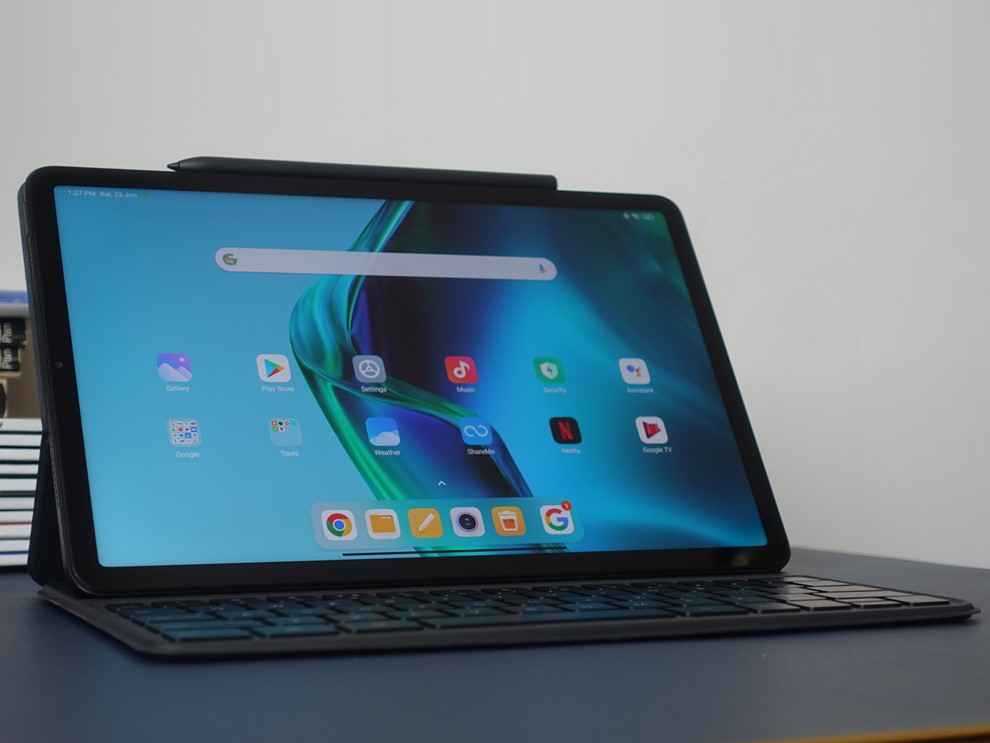
Xiaomi is back in the tablet space and how! It sets a benchmark with its Xiaomi Pad 5 which goes heavy with features on offer but is light on the pocket. Its closest competitor is the Apple iPad (9th gen) which undoubtedly offers a better tablet experience, especially with its support of apps and games but, with the Pad 5 you’re getting an immersive display with 120Hz refresh rate, better audio experience, great battery life and 256GB storage for Rs 28,999 (iPad 2021 is Rs 44,900). Add in the cost of the Smart Pen (Rs 5,999) and you’re at around Rs 35,000 and while we don’t know the price of the Keyboard, it’s unlikely to go beyond the 44k mark. The first-generation Apple Pencil costs Rs 8,500 and the Smart Keyboard costs another Rs 13,900, totalling Rs 67,300. Did the math for you!
The Xiaomi Pad 5 is a solid showing from the company but it does have its fair share of drawbacks. The MIUI for Pad needs more optimizations be it in system or with apps but the cohesiveness of iPad OS is missing right now. The Pad 5 misses out on cellular connectivity, GPS, biometric fingerprint reader and a 3.5mm headphone jack. Save for the cellular option, all are essential features in my opinion. Then there’s the case of Xiaomi pulling a fast one by offering support for 33W fast charging but a 22.5W adapter in the box.
The question remains whether the Xiaomi Pad 5 and by extension Android is ready and worth any kind of investment by users. Our review unit is running MIUI 13 which is sadly based on Android 11 but was able to handle multi-tasking and tasks like gaming and sketching with great ease. I can see Pad 5 being used by college students and creative pros who want to try their hands at sketching and designing. It runs the Microsoft Office suite so you can make your projects on this tablet and even write your first novel on it. It works as a great media consumption device too, but what it can’t do is be a laptop replacement and perform high-level tasks meant for laptops.
from Tablets Reviews https://ift.tt/1gTrZP4
https://ift.tt/hrgeF0k













No comments:
Post a Comment